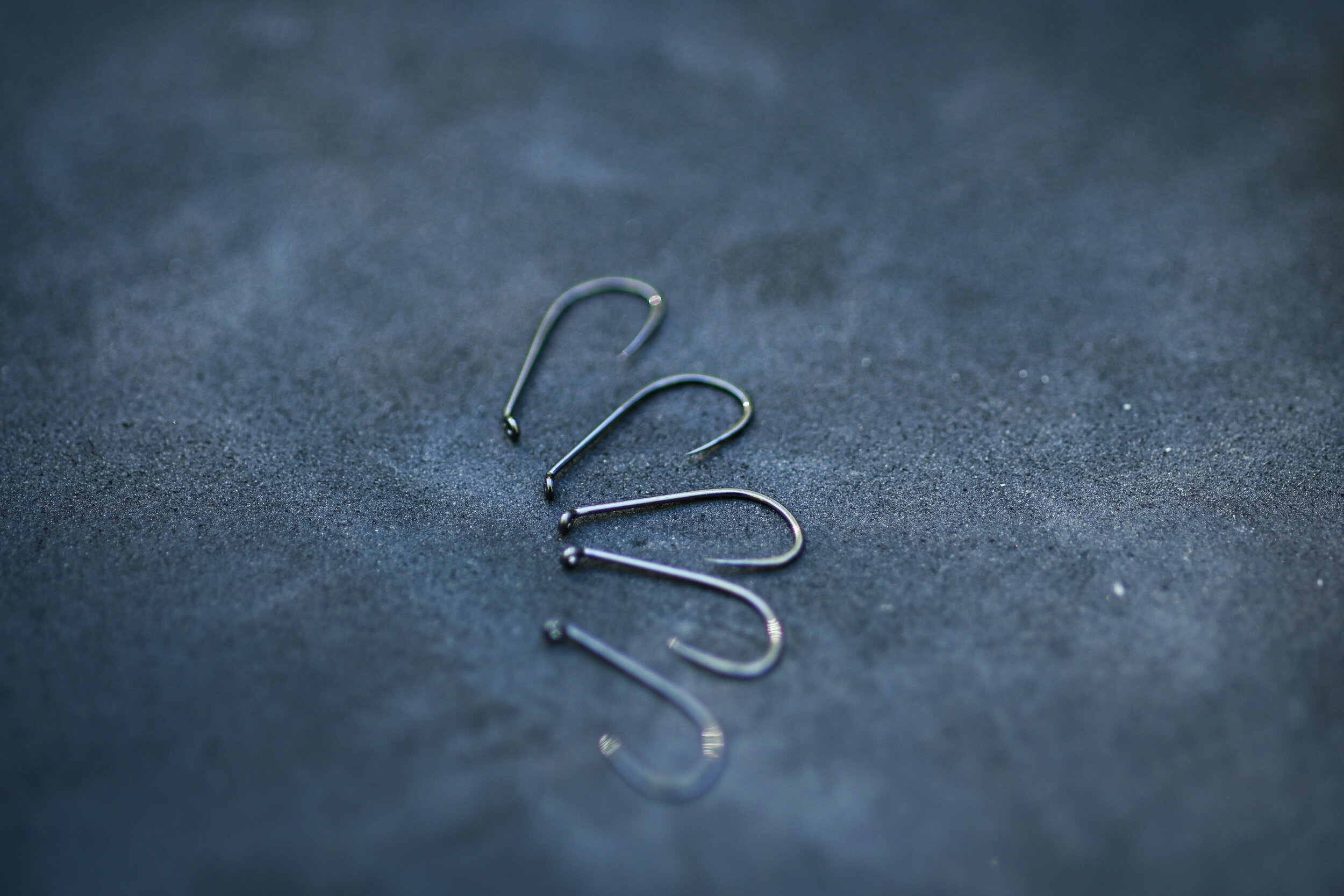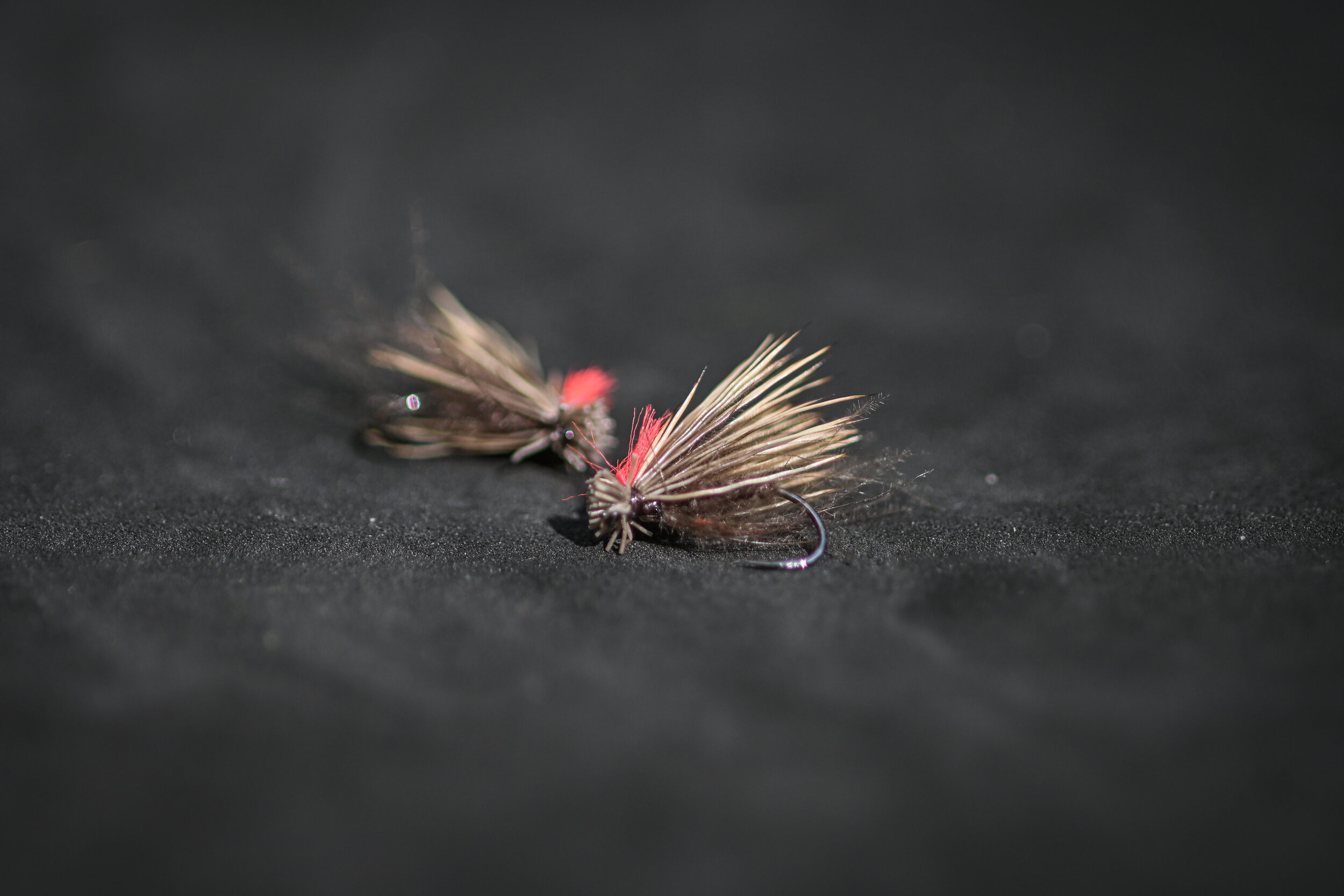The Importance of Barbless Hooks
This post was created in collaboration with Fulling Mill and a similar version appears in their blog here.
Barbless hooks have been around for years. However, as catch and release angling has surged in popularity, so too has demand for these hooks. You might be asking yourself, what’s the big deal? After all, you can just crimp the barbs on your other hooks.
Here’s the thing: when you crimp the barb on a barbed hook you remove the one thing meant to keep the fish on, the barb. Barbless hooks—on the other hand—are engineered to have excellent fish holding power without the barb there in the first place.
The History of Barbless
So, barbless hooks. Where did it all start? According to Fulling Mill Technical Manager Steve Carew, Fulling Mill has been selling barbless hooks for 25 years or more. He says “the initial designs were introduced due to the increase in catch and release fishing. They were exact barbless copies of the successful barbed hooks that we sold and used in our fly production. I have to say, though, that these hooks were a resounding flop. The initial production batch were quickly discontinued, and it took us many years to sell through the stock.”
However, the story doesn’t end there. Steve continues, “around 2011 we saw that competition style fly fishing on rivers was really gaining in popularity and the top teams were using manufactured barbless hooks from Eastern Europe. So, we decided to launch a range of barbless flies and initially we used the hooks from Eastern Europe to tie them. We discovered all sorts of quality issues with these hooks, so after a serious sales job on the then owner of Fulling Mill, he was convinced to invest once again in getting barbless hooks manufactured. This time, however, the hooks were not just straight barbless copies of barbed designs. The rest is history. The fly range and the hooks were a huge success, and they continue to be a core part of Fulling Mill’s fly and hook offering.”
What Makes Barbless Hooks Unique?
Barbless hooks are specially engineered to hold hooked fish just as well as their barbed counterparts. According to Fulling Mill Technical Manager Eric Kelley, when you remove the barb on a hook “you need to look elsewhere within the design to see what can add holding power to that hook model.”
As an example of this, he says “a popular method is extending the hook point to give the angler better leverage to hold a fish more securely. You can mess with the angle of the bend as well to increase holding power and leverage applied. Basically, a whole mess of things can be tweaked in the hook shape to get what you’re ultimately after. Its why hook development is so fun.”
The Fulling Mill Barbless Range
When we introduced our second round of barbless hooks, they were an immediate success. According to Eric, “We released a handful of models all at once to better suit the needs and wants of anglers who kept asking for barbless hooks. The Grab Gape, Jig Force, Heavy Weight Champ and Czech Nymph hooks were the original forerunners. That was a decade ago and immediately after their release, anglers and tyers kept knocking on the door for more.”
While there is still demand for barbed hooks in some applications, with the spotlight being shown on the competition scene, more and more people are now starting to realize that barbless hooks aren’t what they used to be decades ago quality wise. More and more anglers are making the change.
The Benefit of Barbless Hooks for Catch-and-Release
Hooks are one of the more well studied aspects of catch and release angling and the resounding consensus is that barbless hooks are better for fish than barbed hooks. There are three main reasons why barbless hooks help create better outcomes for each fish you release.
Less Injury and Bleeding
Barbless hooks cause less injury and bleeding. Studies on species as wide ranging as trout, bass, and triggerfish have shown the there is less bleeding and injury associated with barbless hooks. Most of the injury from barbed hooks is a result of the unhooking process. This study found that barbless hooks significantly reduced moderate or severe injury. This can become increasingly important when a fish is hooked in sensitive areas (gills, throat, gut, or foul-hooked) where bleeding is more likely to occur.
Easier and Faster to remove
Second, barbless hooks are easier and faster to remove. Based on research on a wide range of freshwater and marine fish, using barbless hooks tends to reduce handing time by half. This is important because the longer your handle a fish the more stressful it is for them (see Principle 3 for more info). A study on Rock Bass in Lake Erie found that barbless hooks were faster and easier to remove and also reduced the duration of air exposure fish experienced by 50%.
Less Mortality
There are a number of studies that have shown that barbless hooks reduce mortality of fish after they are released. In this meta-analysis (a statistical analysis that combines the results of multiple scientific studies), the authors found that in some studies barbless hooks decreased mortality. Overall, the authors found that in the studies they examined the average mortality rate for barbed hooks was 14.6% and for barbless hooks was 8.2%. They hypothesized that it was often either or a combination of both of the first two reasons (less injury and bleeding, and faster unhooking) that led to decreased mortality for fish caught with barbless hooks.
Barbless hooks, in particular those designed as barbless as opposed to barbed hooks that have been crimped, lead to advantages for anglers and fish alike. Each time you catch a fish, it’s an opportunity to put conservation into action by using best practices — barbless hooks is the perfect place to start.








